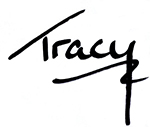Take Advantage of This Fantastic Discoverability Tool

Do you do BookFunnel?
If you do, are you participating in the BookFunnel (BF) promos? You should—they’re one of the most effective tools for discoverability, and they can build up your email list quickly, if that is a priority for you.
If you are not yet using BookFunnel, check out the plans and pricing here [no affiliation]. Even the cheapest plan ($20 USD for the year) will allow you to participate in group promos.
Here are eight tips to get the most out of your BookFunnel promos.
Make sure your landing pages are perfect.
Roll up your sleeves and learn how to build good landing pages. BookFunnel has great support documentation that will walk you through all your options.
Treat your landing pages as you would a landing page anywhere else; learn what makes readers click, and what repels them.
I see too many author landing pages in group promos that are missing basic information – no cover, or no description. (Or, on one memorable occasion, neither cover nor description!)
Also, avoid wrong links, or a lack of links. For example, an author who only put in the Amazon link to her book, even though she was wide – I clicked away because the one Amazon link made me assume she was in Kindle Unlimited, which I don’t subscribe to.
Change the color highlights of your landing page to compliment your cover. Play around with the placement of the cover.
Make sure your links are correct. Use Books2Read links whenever possible, because they will take the reader to their local Amazon and Kobo, etc.; instead of driving them to the US versions. This annoys non-US readers a lot, because getting to their local version and finding the book there is not a simple click.
As much as possible, add reading samples to each of your books, so that the option to read a sample shows up on your landing page.
Make sure your landing page looks attractive, readable, and gives all the information a reader needs to decide if they want to click the big button.
Avoid super long promos.
Most BF promos run from the first of the month to the last of the month. A smaller portion of promos run from mid-month to mid-month.
This allows authors who only send out one newsletter a month to participate.
However, there are some promos that last longer, sometimes much longer, than a month. These are best avoided, especially if you are required to discount your book to participate in these longer promos. If the promo runs for three months, for example, you’re forced to keep your book discounted for all three months.
The bulk of traffic, clicks and sales happen at the front end of a promo—in the first few days. Promos that last for months are usually inert and inactive after a week or so, and are best avoided.
I really like the very short promos. A week, two weeks, or even just a few days. There are occasional promos that are one day only. These shorter promos are great—they get all their traffic in the few days they’re active, then they’re done.
Avoid generic promos.
This is particularly relevant for romance, as it has dozens of sub-categories on BookFunnel, but all the genres have sub-categories of their own.
Also, the organizers of promos can narrow down the focus of their promo within the description of the promo.
The narrower the focus of a promo, the better.
Promos that are all-inclusive (for e.g., the category is simply “Romance” or “Science Fiction” rather than “Historical Romance” or “Space Opera”) are not as effective at driving clicks on your landing page.
That is because all the other authors who participate in the generic promos may bring a lot of traffic, but if your book is hard science fiction, and all their readers are only interested in space opera, none of the traffic that author brings to the promo will touch your book.
Generic, all-inclusive promos water down the effectiveness of the promos because of the disparate readers they bring.
While narrowly focused promos help bring authors with similar readerships together, so any one author’s readers will leap upon the books on offer from all the other authors.
Don’t avoid sales promos.
Sales promos are great.
Sales landing pages point the reader to retail locations where they can buy your book.
If you sell direct, you can point the reader to your store. You can also add coupon codes, so the reader can pick up a deal just on your store, and you can also add retail links in case they prefer to shop there.
If you suspect your readers are avoiding the sales because they “have to buy the book”, then gently point out that many authors add permafree titles to sales promos, and when downloading those permafree titles, the reader isn’t required to sign up for the author’s newsletter, so it’s a win-win for author and reader.
It might look like a loss to you, if you’re not capturing the reader’s email address, but if they download your permafree title elsewhere, you’re still in their inbox or on their ereader, and when they eventually read the title, they could circle back and pick up the rest of the series. So, you win, too, eventually.
Plus, there are eye-popping deals that happen inside Sales promos.
I constantly offer books with 20% discounts via the sales promos, for example.
Plus, sales promos are the vehicle you can use to get visibility for new releases, which you don’t want to give away in Newsletter promos.
Educate and entertain your readers.
All BF group promos require that you use your tracking link and announce the promo to readers on your email list.
But you can make these announcements entertaining and also help the reader get the most out of the BF promos, too.
I go in a lot of promos – upward of 50 each month, spread across four different pen names. That’s a lot of promos to announce to my email lists.
I batch five promos per day into one email, but I don’t just dump links in the email.
I often drop in funny memes, just to keep everyone smiling.
I always talk about the five promos for the day. I make sure I let the readers know the end dates of the promos, because the image headers for each promo often don’t include the dates it is running. This is important if the promo is a short one.
If there are any super-interesting promos in the batch, I talk about what makes them interesting. For example, this month there is the very first promo I’ve ever seen on BF that features print editions.
And if a promo has great-looking covers in it, or well-known authors, I’ll mention them. Or if there’s a new author to me, with a great looking book, I’ll draw attention to it.
I also use the emails to educate (very gently and subtly) readers about BF promos. As I just discussed about Sales promos; I often remind readers of these advantages.
Plus, promos with a lot of books in them are great for browsing. Promos that feature new releases only are great for discovering new and promising titles. Promos that feature boxed sets are a way to scoop up whole series at a time, often at a discount that is found nowhere else.
These facts can be mentioned in the emails, to help readers get the most out of BF promos…and keep them opening your BF emails, too.
Let your readers opt out of BF emails.
If, like me, you send out a lot of emails about promos, or if you separate your BF promo news from your main newsletter, you should also allow readers to opt out of BF emails, if they want to.
This keeps readers on your email list, where they can still hear about your new releases and other book news, instead of unsubscribing because they don’t want to hear about promos, or resent frequent emails.
Use tagging, rules or segmentation tools available from your email service provider to separate the readers who want to opt out from BF emails and make sure they do not hear about promos ever again.
I do this by providing a link in every BF email that lets readers opt out (in the background, they are tagged for “no BF emails”).
I also provide a link that lets readers tag themselves to receive BF promos, in case they change their mind, or they clicked the opt-out link accidentally.
By segmenting and sending BF promo emails only to readers who have agreed to receive them, you’re ensuring your email open rate remains high, and engagement with your emails is strong.
Surprisingly, very few readers of my very large email list actually opt-out.
This segmenting also means you can send more emails in a month than a single author newsletter.
Submit the maximum number of books allowed.
Many BookFunnel promos will limit the number of books you can submit.
Whenever you can, submit the maximum number of books allowed.
This tactic works very well in Sales promos. For example, if you are permitted to add up to six books, then you can add an entire series, or the bulk of a series to the promo.
If you brand your series so that they are all related to each other visually, it makes your series highly visible on the promotion page. And as some promo organizers arrange the books in the promo by the order they were submitted in, you can end up with all six (or more) covers arrayed in a big block together, which further draws the readers’ eyes.
Even if you can’t provide six books in a single series, having six books with your author name on them will still make your name and your books more visible than a single cover that is scrolled by quickly.
And if one cover doesn’t catch a reader’s attention, another one might.
Write and release more books.
The more books you release, the more flexibility you have to make the first books in series free (and submit them to the newsletter promos that are 100% giveaways).
The more books you have released, the more freedom you have to discount (because read-through pays for the discount).
With multiple books, you can submit the full number allowed in a promo and take up valuable screen estate and reader attention.
The more books you have released, the more promos you can enter and not bore readers with “that old book again!”.
There are always advantages to writing more and having a large catalogue. These are the advantages your extended backlist provides when participating in BookFunnel Promos.
————-
There you have it. Eight super-tips that will help you get the most out of your BookFunnel promos.

Write More, Faster Than Ever Before | Are You Prolific?
Editing Your Next Novel? Mark Posey offers fast, writer-friendly edits with zero drama. Check out services »
